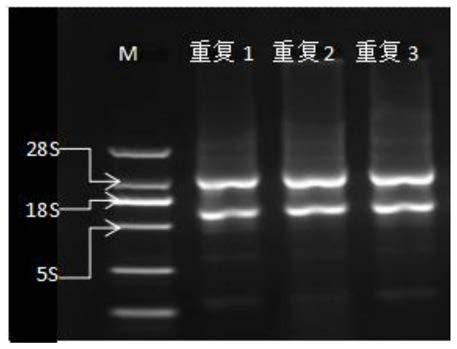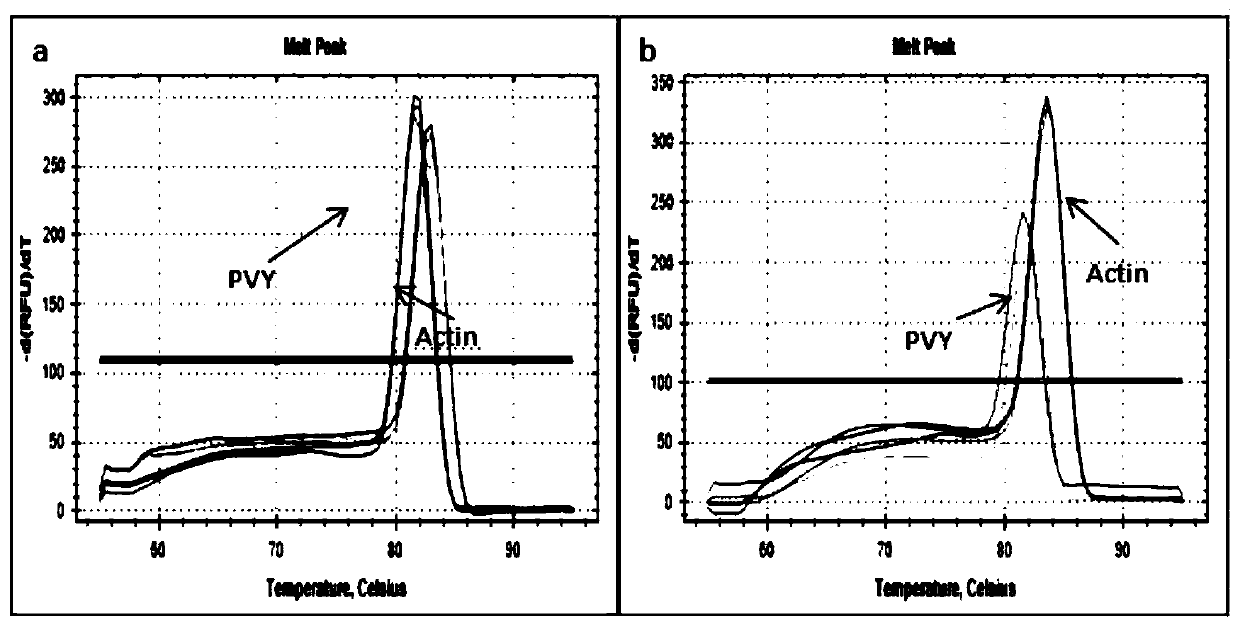Salt-tolerance bacillus E40207a2 and application thereof
A technology of e40207a2 and halotolerant bacillus, applied in the field of microorganisms, to achieve effective antagonism and control, environmental safety, and good control effects
- Summary
- Abstract
- Description
- Claims
- Application Information
AI Technical Summary
Problems solved by technology
Method used
Image
Examples
Embodiment 1
[0032] Example 1 Isolation and Identification of Bacterial Strain E40207a2
[0033] 1) Isolation of strain E40207a2
[0034] Take an appropriate amount of salt lake mud samples, air-dry (about 7d), and treat at 120°C for 1h. Weigh 10g of the processed lake mud sample, add 90m L of sterile seawater, put it into a sterilized Erlenmeyer flask equipped with glass balls, shake it fully for 30min, and draw the supernatant after standing still, the supernatant is 10 -1 Soil sample. the above 10 -1 Samples were serially diluted to 10 -2 and 10 -3 times, pipette 150 μL of each gradient sample, spread it on each medium plate, and repeat 3 times for each sample. The coated plate was placed upside down in an incubator, and cultured upside down at 28°C and 37°C, respectively, and colonies were observed, and a single colony was picked and purified. The purified strains were stored on the slant of the test tube and placed in a refrigerator at 4°C. The medium is ATCC213 modified mediu...
Embodiment 2
[0041] Example 2 Strain Activation, Preparation of Fermentation Broth and Inhibition of PVY Resistance Evaluation
[0042] 1.1 Test medium, strain activation and fermentation broth preparation
[0043] 1.1.1 The halophilic bacteria activation fermentation medium is as follows:
[0044] ATCC213 modified medium: MgSO 4 ·7H 2 O 10g, CaCl 2 2H 2 O 0.2g, KCl 5g, peptone 2.5g, yeast extract 10g, NaCl 30g, agar powder 12g, distilled water to 1000mL, pH 7.2-7.4.
[0045] 1.1.2 The halophilic bacteria were isolated, purified and preserved from the Qinghai Chaerhan Salt Lake by the Key Laboratory of Qinghai-Tibet Plateau Biotechnology Ministry of Education. The preserved strains were streaked on the solid medium of ATCC213 modified medium, and cultured in a constant temperature incubator at 37°C for 24 hours for later use.
[0046] 1.1.3 Fermentation broth preparation: Inoculate the activated halophilic bacteria strain with 20% inoculum volume into a 1000mL Erlenmeyer flask with 8...
Embodiment 3 3
[0064] Example 3 Response expression of related stress-resistant genes in Sansheng Tobacco
[0065] 1) Template preparation
[0066] The total RNA extracted in Example 2 and the cDNA obtained by inversion were directly used as templates.
[0067] 2) Design of primers related to stress resistance genes in Sansheng Tobacco
[0068] Referring to the primer design method in Example 2, design the fluorescent primers of the relevant resistance genes in the host tobacco Sansheng tobacco (Table 3).
[0069] Table 3 Anti-stress gene sequence
[0070]
[0071] 3) Responsive expression of related stress-resistant genes in Sansheng Tobacco
[0072] One week after PVY infects Sansheng tobacco, the expression levels of 9 stress-resistant genes of the host Sansheng tobacco were quantitatively detected by Real-time PCR. Among them, glutathione-S-transferase (GST), PVY capsid protein interacting protein-3 (CpIp), Cullin protein-1 (Cullin), box family protein (F-Box) and eukaryotic trans...
PUM
 Login to View More
Login to View More Abstract
Description
Claims
Application Information
 Login to View More
Login to View More - R&D
- Intellectual Property
- Life Sciences
- Materials
- Tech Scout
- Unparalleled Data Quality
- Higher Quality Content
- 60% Fewer Hallucinations
Browse by: Latest US Patents, China's latest patents, Technical Efficacy Thesaurus, Application Domain, Technology Topic, Popular Technical Reports.
© 2025 PatSnap. All rights reserved.Legal|Privacy policy|Modern Slavery Act Transparency Statement|Sitemap|About US| Contact US: help@patsnap.com



